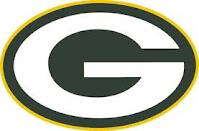

The Green Bay Packers are an American football team based in Green Bay, Wisconsin. They are members of the North Division of the National Football Conference (NFC) in the National Football League (NFL). The Packers are the current NFL champions. Green Bay is the third-oldest franchise in the NFL, though they were organized and playing in 1919. The Packers are the last vestige of "small town teams" that were once common in the NFL during the 1920s and 1930s. Founded in 1919 by Earl "Curly" Lambeau (hence the name Lambeau Field on which the team plays) and George Whitney Calhoun, the Green Bay Packers can trace their lineage to other semi-professional teams in Green Bay dating back to 1896. In 1919 and 1920 the Packers competed as a semi-professional football team against clubs from around Wisconsin and the Midwest. They joined the American Professional Football Association (APFA) in 1921, the forerunner to what is known today as the National Football League (NFL). The Packers are the only non-profit, community-owned major league professional sports team in the United States.
The Green Bay Packers have won 13 league championships (more than any other team in the NFL), including nine NFL championships prior to the Super-Bowl era and four Super Bowl victoriesin 1967 (Super Bowl I), 1968 (Super Bowl II), 1997 (Super Bowl XXXI) and 2011 (Super Bowl XLV). The team 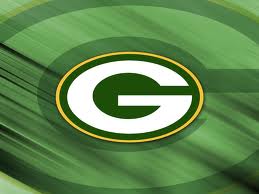 has a rivalry with the Chicago Bears.
Contents
has a rivalry with the Chicago Bears.
Contents
Founding
Main article: History of the Green Bay Packers Curly Lambeau
The Green Bay Packers were founded on August 11, 1919[1] by former high-school football rivals Earl "Curly" Lambeau and George Whitney Calhoun.[8] Lambeau solicited funds for uniforms from his employer, the Indian Packing Company. He was given $500 for uniforms and equipment, on the condition that the team be named for its sponsor. Today "Green Bay Packers" is the oldest team-name still in use in the NFL, both by its nickname and by virtue of remaining in its original city.
On August 27, 1921, the Packers were granted a franchise in the new national pro football league that had been formed the previous year. Financial troubles plagued the team and the franchise was forfeited within the year, before Lambeau found new financial backers and regained the franchise the next year. These backers, known as the "Hungry Five", formed the Green Bay Football Corporation. Notable seasons Record 13 NFL World Championships
League annals show 13 World Championships, the most in the NFL (the next closest team is the Chicago Bears, with nine). The first three were decided by league standing, the next six by the NFL Title Game, and the final four by Super Bowl victories. The Packers are also the only team to win three consecutive NFL titles, having accomplished this twice (1929-30-31 under Lambeau and 1965-66-67 under Vince Lombardi).
19291931: Lambeau's Team Arrives
After a near-miss in 1927, Lambeau's squad claimed the Packers' first NFL title in 1929 with an undefeated 1201 campaign, behind a stifling defense which registered eight shutouts. Green Bay would repeat as league champions in 1930 and 1931, bettering teams from New York, Chicago and throughout the league, with all-time greats and future Hall of Famers Mike Michalske, Johnny (Blood) McNally, Cal Hubbard and Green Bay native Arnie Herber. Among the many impressive accomplishments of these years was the Packers' streak of 30 consecutive home games without defeat, an NFL record which still stands.[9]
19351945: The Don Hutson Era
The arrival of end Don Hutson from Alabama in 1935 gave Lambeau and the Packers the most-feared and dynamic offensive weapon in the game. Credited with inventing pass patterns, Hutson would lead the league in receptions eight seasons and spur the Packers to NFL championships in 1936, 1939 and 1944. An iron man, Hutson also led the league in interceptions in 1940. Hutson claimed 18 NFL records when he retired in 1945, many of which still stand.[10] In 1951, his number 14 was the first to be retired by the Packers, and he was inducted as a charter member of the Pro Football Hall of Fame in 1963.
19461958: Wilderness
After Hutson's retirement, Lambeau could not stop the slide of the Packers, and departed after the 1949 season. Gene Ronzani and Lisle Blackbourn could not coach the Packers back to their former magic, even as a new stadium was unveiled in 1957. The losing would crescendo to the disastrous 1958 campaign under coach Ray "Scooter" McLean, whose lone year at the helm resulted in a 1101 mark, worst in Packer history.[11]
19591967: The Lombardi Era and the Glory Years
On February 2, 1959, the hiring of New York Giants assistant Vince Lombardi as Packers head coach and general manager represented the beginning of a remarkable, immediate turnaround. Under Lombardi, the Packers would become the Team of the 60s, winning five world championships over a seven-year span, including victories in the first two Super Bowls. During the Lombardi era, the stars of the Packers' offense included Bart Starr, Jim Taylor, Carroll Dale, Paul Hornung (as halfback and placekicker), Forrest Gregg, and Jerry Kramer. The defense included Willie Davis, Henry Jordan, Willie Wood, Ray Nitschke, Dave Robinson, and Herb Adderley.
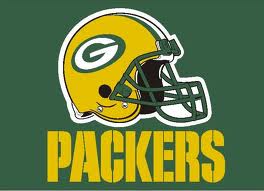
1959
In their first game under Lombardi on September 27, 1959, the Packers beat the Chicago Bears, 96, in Green Bay. After winning their first three, the Packers lost the next five before finishing strong by winning the rest. The 75 record represented the Packers' first winning season since 1947. Rookie head coach Lombardi was named Coach of the Year.
1960
The next year, the Packers, led by Paul Hornung's 176 points, won the NFL West title and played in the NFL Championship against the Philadelphia Eagles at Philadelphia. In a see-saw game, the Packers trailed the Eagles by four points late in the game, when Chuck Bednarik tackled Jim Taylor just nine yards short of the goal line as time ran out. They claimed that they did not "lose" that game; they were simply behind in the score when time ran out on them. 1961
The Packers in 1920
The Packers returned to the NFL Championship game the following season and faced the New York Giants in the first league title game to be played in Green Bay. The Packers scored 24 second-quarter points, including a championship-record 19 by Paul Hornung, on special "loan" from the Army (one touchdown, four extra-points and three field goals), powering the Packers to a 370 rout of the Giants, their first NFL Championship since 1944.[12] It was in 1961 that Green Bay became known as "Titletown."
1962
The Packers stormed back in the 1962 season, jumping out to a 100 start, on their way to a 131 season. This consistent level of success would lead to Lombardi's Packers becoming one of the most prominent teams of their era, and even to their being featured as the face of the NFL on the cover of Time on December 21, 1962, as part of the magazine's cover story on "The Sport of the '60s".[13] Shortly after Time's article, the Packers faced the Giants in a much more brutal championship game than the previous year, but the Packers prevailed on the surprising foot of Jerry Kramer and the determined running of Jim Taylor. The Packers defeated the Giants in New York, 167.
1965
The Packers returned to the championship game in 1965 following a two-year absence, when they defeated the Colts in a playoff for the Western Conference title. That game would be remembered for Don Chandler's controversial tying field goal in which the ball allegedly went wide right, but the officials signaled "good." The 1310 overtime win earned the Packers a trip to the NFL Championship game, where Hornung and Taylor ran through the defending champion Cleveland Browns, helping the Packers win, 2312, to earn their third NFL Championship under Lombardi and ninth overall. Goalpost uprights would be made taller the next year.
1966
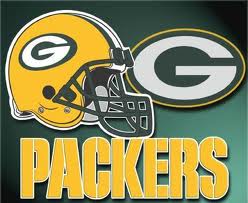 The 1966 season saw the Packers led by an MVP season from quarterback Bart Starr. The Packers went 122, and in the NFL Championship, with the Packers leading 3427, the Dallas Cowboys had the ball on the Packers' two-yard line, threatening to tie the ballgame. But on fourth down, the Packers' Tom Brown intercepted Don Meredith's pass in the end zone to preserve their victory in against Dallas. The Packers went on to win Super Bowl I 3510 over the Kansas City Chiefs.
The 1966 season saw the Packers led by an MVP season from quarterback Bart Starr. The Packers went 122, and in the NFL Championship, with the Packers leading 3427, the Dallas Cowboys had the ball on the Packers' two-yard line, threatening to tie the ballgame. But on fourth down, the Packers' Tom Brown intercepted Don Meredith's pass in the end zone to preserve their victory in against Dallas. The Packers went on to win Super Bowl I 3510 over the Kansas City Chiefs.
1967
The 1967 season was the last one for Vince Lombardi as the Packers' head coach. The NFL Championship game, a rematch of the 1966 contest against Dallas, is better known as the Ice Bowl, due to the brutally cold conditions at Lambeau Field in Green Bay. Still the coldest NFL game ever played, the Ice Bowl remains one of the most famous football games (college or professional) in the history of the sport. With 16 seconds left, Bart Starr's touchdown on a quarterback sneak brought the Packers a 2117 victory and their third straight NFL Championship a feat no other team has matched. The Packers then won Super Bowl II with a 3314 victory over the Oakland Raiders. Lombardi stepped down as head coach after the game, and Phil Bengtson was named as Head Coach. He remained general manager for one season, but left Green Bay in 1969 to become head coach and minority owner of the Washington Redskins.
After the death of Vince Lombardi in September 1970, the Super Bowl trophy was renamed the Vince Lombardi Trophy, in recognition of his, and his team's, accomplishments. Lambeau Field has had a street address of 1265 Lombardi Avenue since 1968, when Green Bay renamed Highland Avenue in honor of the coach.
19681991
For about a quarter century after Lombardi's departure, the Packers had relatively little on-field success. In the 24 seasons from 1968 to 1991, the Packers had only five seasons with a winning record (above .500), one being the shortened 1982 strike season. They appeared in the playoffs twice during that period, with a record of 12. The period saw five different head coaches Phil Bengtson, Dan Devine, Bart Starr, Forrest Gregg, and Lindy Infante two of which were former Packer players in Lombardi's era (Starr and Gregg), and one of which was a former coach (Bengtson). Each of these men led the Packers to a poorer record than his predecessor. Poor personnel decisions typified this time period. A notorious example includes the 1974 trade in which Dan Devine acting as GM sent five 1975 and 1976 draft picks (two first-rounders, two second-rounders and a third) to the Los Angeles Rams for aging quarterback John Hadl, who would spend only 1½ seasons in Green Bay.[14] Another came in 1989, when players such as Barry Sanders, Deion Sanders, and Derrick Thomas were available, but the Packers chose offensive lineman Tony Mandarich with the second overall pick in the NFL draft. Though rated highly by nearly every professional scout at the time, Mandarich's performance failed to meet expectations. ESPN has rated Mandarich as the third "biggest sports flop" in the last 25 years.[15]
The Brett Favre Era: 19922007
Brett Favre
The Packers' performance throughout the 1970s, 1980s, and early 1990s led to a shakeup in which new General Manager Ron Wolf was hired to take over full control of the team's football operations during the 1991 season. In 1992, Wolf hired San Francisco 49ers offensive coordinator Mike Holmgren to be the Packers' new head coach.
Soon after hiring Holmgren, Wolf acquired quarterback Brett Favre from the Atlanta Falcons for a first-round pick. Favre got the Packers' their first win of the 1992 season, stepping in for injured quarterback Don Majkowski and leading the Packers to a comeback win over the Cincinnati Bengals. Favre started the following week with a win against the Pittsburgh Steelers, and never missed a start during his time with the Packers through the 2007 season. He would go on to break the record for consecutive starts by an NFL quarterback, starting 297 consecutive games including stints with the New York Jets and Minnesota Vikings with the streak finally coming to an end late in the 2010 season.
The Packers had a 97 record in 1992, and began to turn heads around the league when they signed perhaps the most prized free agent in NFL history in Reggie White on the defense in 1993. White believed that Wolf, Holmgren, and Favre had the team heading in the right direction with a "total commitment to winning." With White on board the Packers made it to the second round of the playoffs during both the 1993 and 1994 seasons but lost their 2nd-round matches to their playoff rival, the Dallas Cowboys, playing in Dallas on both occasions. In 1995, the Packers won the NFC Central Division championship for the first time since 1972. After a home playoff 3720 win against Favre's former team, the Atlanta Falcons, the Packers defeated the defending Super Bowl champion San Francisco 49ers 2717 in San Francisco on the road to advance to the NFC Championship Game, where they lost again to the Dallas Cowboys 3827.
1996, Super Bowl XXXI Champions
In 1996, the Packers' turnaround was complete. The team posted a league-best 133 record in the regular season, dominating the competition and securing home field advantage throughout the playoffs. They were ranked #1 in offense with Brett Favre leading the way, #1 in defense with Reggie White as the leader of the defense and #1 in special Teams with former Heisman Trophy winner Desmond Howard returning punts and kickoffs back for touchdowns. After relatively easy wins against the 49ers in a muddy (3514) beatdown and Carolina Panthers (3013) in what was referred to as "Ice Bowl 2", the Packers advanced to the Super Bowl for the first time in 29 years. In Super Bowl XXXI Green Bay defeated the New England Patriots 3521 to win their 12th world championship. Desmond Howard was named MVP of the game for his kickoff return for a touchdown that ended the Patriots bid for a comeback. Then-Packers President Bob Harlan credited Wolf, Holmgren, Favre, and White for ultimately changing the fortunes of the organization and turning the Green Bay Packers into a model NFL franchise. A 2007 panel of football experts at ESPN ranked the 1996 Packers the 6th-greatest team to ever play in the Super Bowl.
1997
The following season the Packers recorded another 13-3 record and won their second consecutive NFC championship. After defeating the Tampa Bay Buccaneers 217 and San Francisco 49ers 2310 in the playoffs, the Packers returned to the Super Bowl as an 11½ point favorite. The team ended up losing in an upset to John Elway and the Denver Broncos in Super Bowl XXXII, by the score of 3124.
19982006
In 1998, the Packers went 115 and met the San Francisco 49ers in the first-round of the NFC playoffs. It was the fourth consecutive year these teams had met in the playoffs, and the sixth overall contest since the 1995 season. The Packers had won all previous games, and the media speculated that another 49ers loss would result in the dismissal of San Francisco head coach Steve Mariucci. Unlike the previous playoff matches, this game was hotly contested, with the teams frequently exchanging leads. With 4:19 left in the 4th quarter, Brett Favre and the Packers embarked on an 89-yard drive, which concluded with a Favre touchdown pass to receiver Antonio Freeman. This play appeared to give Green Bay the victory. But San Francisco quarterback Steve Young led the 49ers on an improbable touchdrive drive, which culminated when Terrell Owens caught Young's pass between several defenders to give the 49ers a lead with three seconds remaining. Afterwards, the game was mired in controversy. Many argued that during the 49ers game winning drive, Niners receiver Jerry Rice fumbled the ball but officials stated he was down by contact. Television replays appeared to confirm these sentiments, and the next season the NFL re instituted an instant replay system. In the end, this game turned out to be the end of an era in Green Bay. Days later Mike Holmgren left the Packers to become Vice President, General Manager and Head Coach of the Seattle Seahawks. Much of Holmgren's coaching staff went with him, and Reggie White also retired after the season (but later played one season for the Carolina Panthers in 2000). In 1999 and 2000, the team struggled to find an identity after the departure of so many of the individuals responsible for their Super Bowl run. VRay Rhodes was hired in 1999 as the team's new head coach. Rhodes had served around the league as a highly-regarded defensive coordinator, and more recently experienced moderate success as head coach of the Philadelphia Eagles from 1995-1998. Ron Wolf believed that Rhodes' experience and player-friendly demeanor would fit nicely in Green Bay's veteran locker room. But Rhodes was fired after one 88 season. Wolf visited team practice late in the 1999 season and believed that players had become too comfortable with Rhodes' style, and said the atmosphere resembled a country club.
In 2000, Wolf replaced Rhodes with Mike Sherman. Sherman had never been a head coach at any level of football and was relatively unknown in NFL circles. He had only coached in professional football for three years starting as the Packers' tight ends coach in 1997 and 1998. In 1999, he followed Mike Holmgren to Seattle and became the Seahawks' offensive coordinator, although Sherman did not call the plays during games. Despite Sherman's apparent anonymity, Wolf was blown away in the interview process by the coach's organizational skills and attention to detail. Sherman's inaugural season started slowly, but the Packers won their final four games to achieve a 9-7 record. Brett Favre praised the atmosphere Sherman had cultivated in Green Bay's locker room and fans were optimistic about the team's future. In the offseason, however, Wolf suddenly announced his own resignation as GM to take effect after the April 2001 draft. Packers President Bob Harlan was surprised by Wolf's decision and felt unsure of how to replace him. Harlan preferred the structure Green Bay had employed since 1991; a general manager who ran football operations and hired a subservient head coach. But with the momentum and locker room chemistry that was built during the 2000 season, Harlan was reluctant to bring in a new individual with a potentially different philosophy. Wolf recommended that Harlan give the job to Sherman. Though Harlan was wary of the structure in principle, he agreed with Wolf that it was the best solution. In 2001, Sherman assumed the duties of both GM and head coach.
From 2001-2004, Sherman coached the Packers to respectable regular-season success, led by the spectacular play of Brett Favre, Ahman Green, and a formidable offensive line. But Sherman's teams faltered in the playoffs. Prior to 2003, the Packers had never lost a home playoff game since the NFL instituted a post-season in 1933 (they were 130, with 11 of the wins at Lambeau and two more in Milwaukee.). That ended January 4, 2003, when the Atlanta Falcons defeated the Packers 277 in an NFC Wild Card game. The Packers would also lose at home in the playoffs to the Minnesota Vikings two years later.
By the end of the 2004 season, the Packers team depth appeared to be diminishing. Sherman also seemed overworked and reportedly had trouble communicating with players on the practice field with whom he was also negotiating contracts. Harlan felt the duel roles were too much for one man to handle and removed Sherman from the GM position in early 2005, while retaining him as a head coach. Harlan hired Seattle Seahawks Vice President of Operations Ted Thompson as the new Executive Vice President, General Manager and Director of Football Operations. The relationship between Thompson and Sherman appeared strained, as Thompson immediately began rebuilding Green Bay's roster. Following a dismal 4-12 season, Thompson fired Sherman. Thompson hired Mike McCarthy, the former offensive coordinator for the San Francisco 49ers and New Orleans Saints as his new head coach. McCarthy had also previously served as the quarterbacks coach for the Packers in 1999.
2007
Former Packers tight end Bubba Franks, 2007
After missing the playoffs in 2006, Brett Favre announced that he would return for the 2007 season; it would turn out to be one of his best. The Packers won 10 of their first 11 games and finished 133, earning a first round bye in the playoffs. The Packers' passing offense, led by Favre and a very skilled wide receiver group, finished second in the NFC, behind the Dallas Cowboys, and third overall in the league. Running back Ryan Grant, acquired for a sixth-round draft pick from the New York Giants, became the featured back in Green Bay and rushed for 956 yards and 8 touchdowns in the final 10 games of the regular season. In the divisional playoff round, in a heavy snowstorm, the Packers beat the Seattle Seahawks 4220. Grant rushed for three touchdowns and over 200 yards, while Favre tossed three touchdown passes and 1 snowball to receiver Donald Driver in celebration.
On January 20, 2008, Green Bay appeared in their first NFC Championship Game in 10 years facing the New York Giants in Green Bay. The game was lost 2320 on an overtime field goal by Lawrence Tynes. This would be Brett Favre's final game as a Green Bay Packer with his final pass being an interception in overtime.
Mike McCarthy coached the NFC team during the 2008 Pro Bowl in Hawaii. Al Harris and Aaron Kampman were also picked to play for the NFC Pro Bowl team as starters. Donald Driver was named as a third-string wideout on the Pro Bowl roster. Brett Favre was named the first-string quarterback for the NFC, but he declined to play in the Pro Bowl and was replaced on the roster by Tampa Bay Buccaneers' quarterback Jeff Garcia. The Packers also had several first alternates, including Chad Clifton and Nick Barnett.
In December 2007, Ted Thompson was signed to a 5-year contract extension with the Packers, while it was announced on February 5, 2008 that head coach Mike McCarthy signed a 5-year contract extension as well. The Aaron Rodgers Era: 2008Present
2008
Aaron Rodgers
Main article: 2008 Green Bay Packers season
On March 4, 2008, Brett Favre tearfully announced his retirement. Within five months, however, he filed for reinstatement with the NFL on July 29. Favre's petition was granted by Commissioner Roger Goodell, effective August 4, 2008.[16] On August 6, 2008 it was announced that Brett Favre was traded to the New York Jets for a conditional draft pick in 2009.[17]
The Packers began their 2008 season with their 2005 first-round draft pick, quarterback Aaron Rodgers, under center, as the first QB other than Favre to start for the Packers in 16 years. Rodgers played well in his first year starting for the Packers, throwing for over 4000 yards and 28 touchdowns. However, injuries plagued the Packers' defense, as they lost 7 close games by 4 points or less, finishing with a 610 record. After the season, eight assistant coaches were dismissed by McCarthy, including Bob Sanders, the team's defensive coordinator, who was replaced by Dom Capers.
2009
Main article: 2009 Green Bay Packers season
In March 2009, the organization assured fans that Brett Favre's jersey number would be retired, but not during the 2009 season. In April 2009, the Packers selected defensive lineman B.J. Raji of Boston College as the team's first pick in the draft. The team then traded three draft picks (including the pick the Packers acquired from the Jets for Brett Favre) for another first-round pick, selecting linebacker Clay Matthews III of Southern California.
During the 2009 NFL season, two match-ups between the franchise and its former legendary QB, Brett Favre, were highly anticipated after Favre's arrival with the division-rival Vikings in August. The first encounter took place in week 4, on a Monday Night Football game which broke several TV audience records. The scheduling of this game was made possible when Baseball Commissioner and Packer Board of Directors Member Bud Selig forced Baseball's Minnesota Twins to play 2 games within a 12 hour span. The Vikings won the game 3023. Brett Favre threw 3 TDs, no interceptions, and had a passer rating of 135.[18] The teams met for a second time in week 8, Favre leading the Vikings to a second win, 3826, in Green Bay. Rodgers was heavily pressured in both games, being sacked 14 times total, but still played exceptionally well, throwing five touchdowns and only one interception. The next week, the Packers were upset by the win-less Tampa Bay Buccaneers. Following a players only meeting, the team started to roll and found some stability on the offensive line with the return of tackle Mark Tauscher bringing a minor halt to sacks to Rodgers and opening the running game to Ryan Grant and the other running backs. Green Bay finished the season strongly, winning 7 out of their last 8 games, including winning their 16th regular season finale in the past 17 seasons, and earning a NFC wild-card playoff bid with an 115 regular-season record. The Packers defense was ranked #2 and the offense was ranked #6 with rookies Brad Jones and Clay Matthews III becoming sensations at linebacker and young players like James Jones, Brandon Jackson, Jermichael Finley and Jordy Nelson becoming threats on offense. Rodgers also became the first quarterback in NFL history to throw for at least 4000 yards in each of his first two seasons as a starter. Also, cornerback Charles Woodson won NFL Defensive Player of the Year honors after recording 9 interceptions, forcing four fumbles, 3 touchdowns and registering 74 tackles and 2 sacks. In fact, Woodson's 9 interceptions were more than the 8 collected by all Packer opponents that season. Though the defense was ranked high, injuries to Al Harris, Tramon Williams, Will Blackmon, Atari Bigby and Brandon Underwood severely limited the depth of the secondary and teams like the Minnesota Vikings and Pittsburgh Steelers used that to their advantage by unleashing aerial assaults against inexperienced players with the NFL's best receivers. The season ended with an overtime loss in a wild card round shoot out at the Arizona Cardinals, 5145. 2010, Super Bowl XLV Champions
Main article: 2010 Green Bay Packers season
After finishing the 2009 season with a 115 record, the Packers held the 23rd selection in the 2010 NFL Draft. With the pick they selected Offensive tackle Bryan Bulaga from Iowa.
On the second day of the draft, with pick 256 the Packers selected Defensive end Mike Neal from Purdue. The Packers then traded picks 386 and 4122 to the Philadelphia Eagles for pick 371. With pick 371, the Packers selected Safety Morgan Burnett from Georgia Tech. Current Packers head coach Mike McCarthy.
On the third and final day of the draft, with pick 5154 the Packers selected Tight end Andrew Quarless from Penn State. With their compensatory selection pick 5169, the Packers selected Offensive guard Marshall Newhouse from Texas Christian. In the sixth round with pick 6193, the Packers selected Running back James Starks from Buffalo. Their final selection of the draft came when the Packers selected Defensive end C. J. Wilson of East Carolina with pick 7230.
At the beginning of September, the Packers announced the 53 man roster, and the 20 players that had been cut. Another loss for Green Bay was the season-long suspension of Johnny Jolly, after he violated the NFL drug policy. The Packers running corps suffered a blow when RB Ryan Grant suffered a season-ending ankle injury in week 1.[19] By the end of the season, the Packers had 16 people on injured reserve, including 7 starters in running back Ryan Grant, tight end Jermichael Finley, linebacker Nick Barnett, safety Morgan Burnett, linebacker Brandon Chillar, tackle Mark Tauscher, and linebacker Brad Jones.
After finishing the regular season with a 10-6 record, the Packers clinched the #6 seed in the NFC playoffs. In the first round, they faced the #3 seeded Philadelphia Eagles. The Packers won the game by the score of 21-16. In the Divisional round, the Packers went on to defeat the #1 seeded Atlanta Falcons 48-21 to reach the NFC Championship Game where they played the Chicago Bears at Soldier Field - only the second playoff meeting between the two storied rivals (the other game being a 33-14 victory for the Bears which sent them to the 1941 NFL Championship Game.) The Green Bay Packers defeated the Chicago Bears 2114 to head to Super Bowl XLV which took place on February 6, 2011, where they defeated the AFC champion Pittsburgh Steelers, 31-25, becoming the first #6 seed from the NFC to win a Super Bowl. Aaron Rodgers was named Super Bowl MVP.[20][21] Public company The Don Hutson Center
The Packers are the only non-profit, community-owned franchise in American professional sports major leagues.[22] Typically, a team is owned by one person, partnership, or corporate entity, i.e., a "team owner." The lack of a dominant owner has been stated as one of the reasons the Green Bay Packers have never been moved from the city of Green Bay, a city of only 102,313 people as of the 2000 census.[23]
By comparison, the typical NFL city has a population in the millions or higher hundred-thousands. The Packers, however, have long had a large following throughout Wisconsin and parts of the Midwest; in fact, for decades, the Packers played four (one pre-season, three regular-season) home games each year in Milwaukee, first at the State Fair Park fairgrounds, then at Milwaukee County Stadium. The Packers did not move their entire home schedule to Green Bay until 1995. County Stadium's replacement, Miller Park, then being planned, was always intended to be a baseball-only stadium instead of a multipurpose stadium.
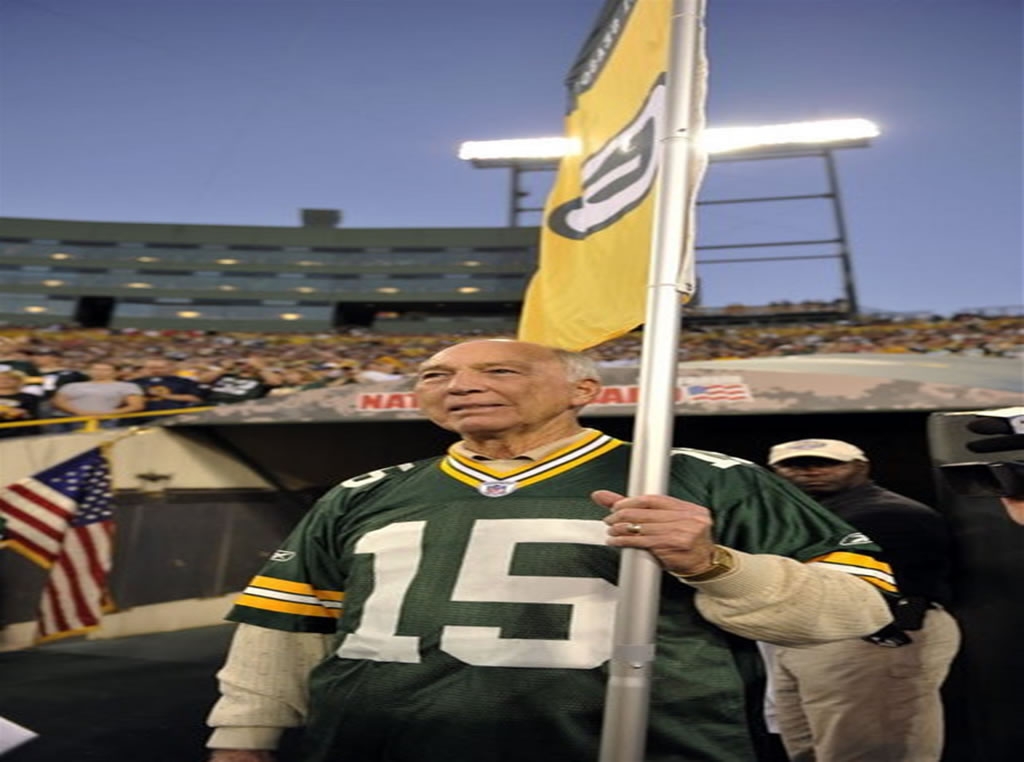 Based on the original "Articles of Incorporation for the (then) Green Bay Football Corporation" put into place in 1923, if the Packers franchise were to have been sold, after the payment of all expenses, any remaining money would go to the Sullivan Post of the American Legion in order to build "a proper soldier's memorial." This stipulation was enacted to ensure the club remained in Green Bay and that there could never be any financial enhancement for the shareholders. At the November 1997 annual meeting, shareholders voted to change the beneficiary from the Sullivan-Wallen Post to the Green Bay Packers Foundation, which makes donations to many charities and institutions throughout Wisconsin.
Based on the original "Articles of Incorporation for the (then) Green Bay Football Corporation" put into place in 1923, if the Packers franchise were to have been sold, after the payment of all expenses, any remaining money would go to the Sullivan Post of the American Legion in order to build "a proper soldier's memorial." This stipulation was enacted to ensure the club remained in Green Bay and that there could never be any financial enhancement for the shareholders. At the November 1997 annual meeting, shareholders voted to change the beneficiary from the Sullivan-Wallen Post to the Green Bay Packers Foundation, which makes donations to many charities and institutions throughout Wisconsin.
In 1950, the Packers held a stock sale to again raise money to support the team. In 1956, area voters approved the construction of a new city owned stadium. As with its predecessor, the new field was named City Stadium, but after the death of founder Curly Lambeau, the stadium was renamed Lambeau Field on September 11, 1965.
Another stock sale occurred late in 1997 and early in 1998. It added 105,989 new shareholders and raised over $24 million, money used for the Lambeau Field redevelopment project. Priced at $200 per share, fans bought 120,010 shares during the 17-week sale, which ended March 16, 1998. As of June 8, 2005, 112,015 people (representing 4,750,934 shares) can lay claim to a franchise ownership interest. Shares of stock include voting rights, but the redemption price is minimal, no dividends are ever paid, the stock cannot appreciate in value (though private sales often exceed the face value of the stock), and stock ownership brings no season ticket privileges. No shareholder may own over 200,000 shares, a safeguard to ensure that no individual can assume control of the club. To run the corporation, a board of directors is elected by the stockholders.
The team's elected president represents the Packers in NFL owners meetings, unless someone else is designated. During his time as coach, Vince Lombardi generally represented the team at league meetings in his role as general manager, except at owners-only meetings, where the team was represented by president Dominic Olejniczak.
Green Bay is the only team with this form of ownership structure in the NFL; such ownership is in direct violation of current league rules, which stipulate a limit of 32 owners of one team and one of those owners having a minimum 30% stake. However, the Packers corporation was grandfathered when the NFL's current ownership policy was established in the 1980s,[24] and are thus exempt. The Packers are also the only American major-league sports franchise to release its financial balance sheet every year. Board of Directors For more details on this topic, see Green Bay Packers Board of Directors.
Green Bay Packers, Inc., is governed by a seven-member Executive Committee, elected from a 45-member board of directors. The committee consists of a president, vice president, treasurer, secretary and three members-at-large. The president is the only officer to draw compensation; the rest of the committee is sitting "gratis." The committee directs corporate management, approves major capital expenditures, establishes broad policy and monitors management's performance in conducting the business and affairs of the corporation. Green Bay Packers Foundation
The team created the Green Bay Packers Foundation in December 1986. The foundation assists in a wide variety of activities and programs that benefit education, civic affairs, health services, human services and youth-related programs.
At the team's 1999 annual stockholders meeting, it was voted to make the foundation the recipient of any remaining assets if the team were to be sold or dissolved. In 1923, the Packers were incorporated in Wisconsin as a nonprofit corporation, with stipulations that if the Packers were sold, all assets would be transferred to the Sullivan-Wallen Post of the American Legion in order to build a "proper soldiers memorial." No shareholder can own more than 200,000 shares in the company. This has put the Packers in a unique situation, as it would be impossible to move the team from Wisconsin. In turn, the franchise has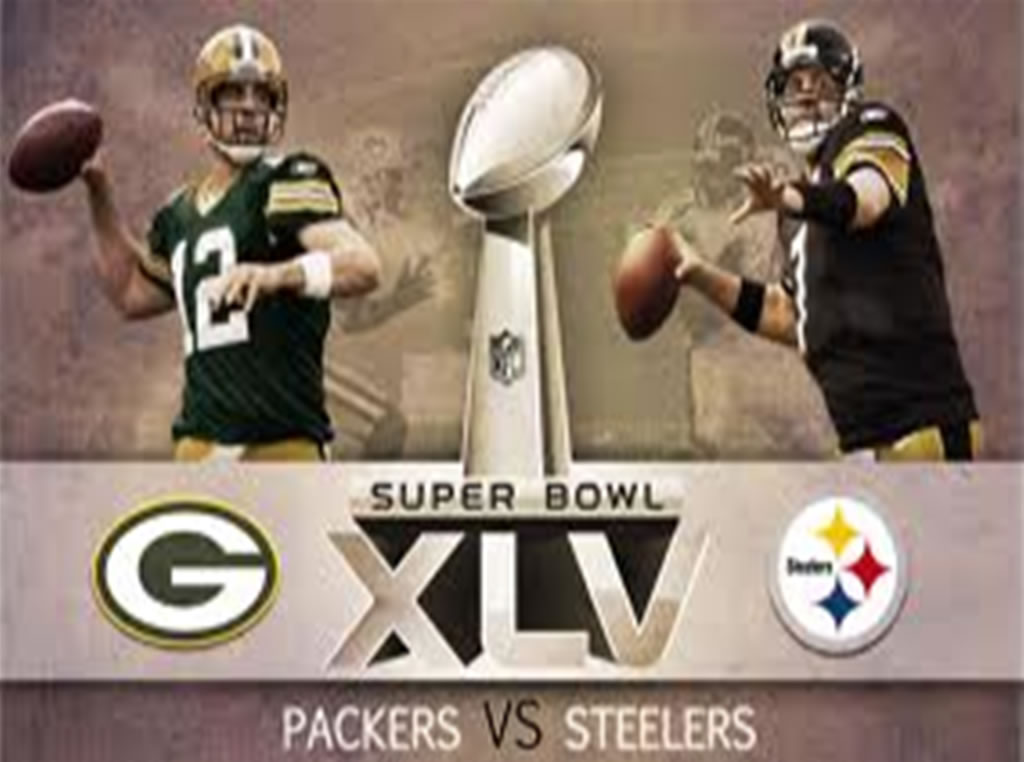 remained in the tiny market of Green Bay.
remained in the tiny market of Green Bay.
In 2011 Green Bay packers went to the superbowl 45 aganist the steelers.
this is where the infomation is (http://en.wikipedia.org/wiki/Green_Bay_Packers)
Contact The Web Master at lanceag96@gmail.com